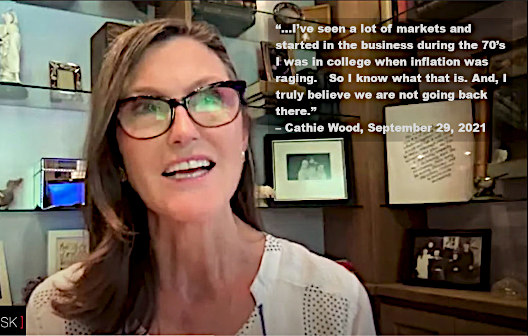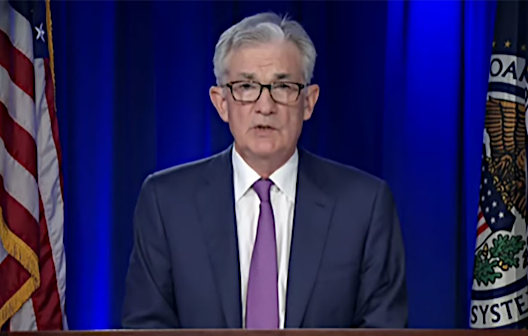The Last Time Inflation Was This High Fed Funds Were 14.5%
The year-over-year inflation rate ending October, as measured by CPI-U, is 6.2%. During the month of October alone, prices rose nearly 1% (0.9%). This is the largest increase since July 1982. And yesterday’s PPI report suggests consumer inflation may be persistent. The question now is, will Fed Chairman Powell continue extending the length of time in his definition of “transitory,” and will the Fed move quicker than initially presented to pull in the price pressures that continue to surprise on the high side?
October CPI Data
- October Consumer Price Index (CPI-U): +0.9% vs. +0.5% consensus and +0.4% prior.
- +6.2% YOY vs. +5.8% consensus and +5.4% prior.
- Core CPI:
+0.6% vs. +0.4% consensus and +0.2% prior. - +4.6% YoY vs. +4.3% consensus and +4.0% prior.
- The increases are broad-based, with continued increases in energy, shelter, food, used cars, and new vehicles.
By itself, the rampant rise in prices does not necessarily argue against Chairman Powell’s expectations that what the U.S. is experiencing is the result of bottlenecks that will begin to fade. But, investors do have to stay aware of market expectations, even if they deviate from the Federal Reserve Bank chairman’s mindset – and with each new inflation report, market participants are questioning it more.
The question for investors of all stripes (stocks, bonds, precious metals, real estate, crypto, etc.) is whether the Fed will show less patience than it has to date and act soon to tighten economic activity.
A Fed tightening in the form of targeting higher overnight bank rates and slowing the pace of bond purchases (tapering) would not necessarily be bad for stock investors but could signal the end of easy money, which many believe has been the tailwind behind the substantial growth in stocks. As for current bond portfolios, they would experience their bond values decline as newer investors would expect higher returns on their bond investments. Bond prices would be present-valued for the new rate environment, which mathematically pushes values down (rates up).
If Powell is wrong on inflation being transitory, or if the Fed keeps lengthening their definition of what that means, holding rates down could cause larger problems down the road. Recent indications are that the inflation growth we’re seeing now could stay in the manufacturing pipeline a while.
Manufacturing Pipeline Inflation
Yesterday the Producer Price Index (PPI) was reported for October. PPI measures the increases at the producer not consumer level. These are input costs at various stages of manufacturing that are part of the pipeline. These either work their way into consumer prices months later, or serve to hurt corporate profits. Part of the series of numbers in the PPI release is PPI Final Demand. This covers the input prices for consumer-facing industries whose prices go on to enter headline CPI. As reported yesterday (November 9), the PPI Final Demand jumped by 0.6% in October from September. This means the year-over-year increase is 8.6% (same as September). These are the biggest jumps in this data going back to eleven years.
This high PPI Final Demand number suggests future CPI releases could easily continue climbing into next year.
Take-Away
The one-year inflation rate for the period ending October 31, 2021, is 6.2%. Investors that did not earn 6.2% or more on their money will find they have lower purchasing power today. While the Federal Reserve stimulus is slowing, earlier this month, the Fed Chairman reiterated the term transitory in relation to his future price expectations. He also left the window open to act sooner if this expectation changes.
For perspective, the last time year-over-year inflation was this high was July of 1982; Fed Funds traded at 14.5%. By October of that year, inflation had fallen and was running at a 5% pace. With the new lower pace, then Chairman Volcker reduced the overnight Fed Funds rate to 9%.
Stay up to date on market-moving information by registering (no cost) for Channelchek email.
Managing Editor, Channelchek
Suggested Reading:
 Inflation Seems Persistent, What Now?
|
 Deflation Not Inflation is Risk Says Cathie Wood
|
 The Fed is Clear that they Intend to Hold Rates Down
|
 The Limits of Government Economic Tinkering (July 2020)
|
Sources:
https://www.bls.gov/news.release/cpi.nr0.htm
https://www.federalreservehistory.org/essays/recession-of-1981-82
Stay up to date. Follow us:

|
